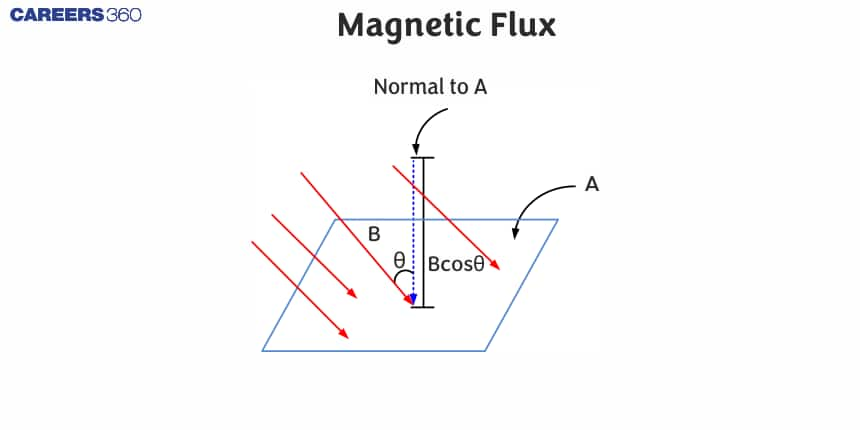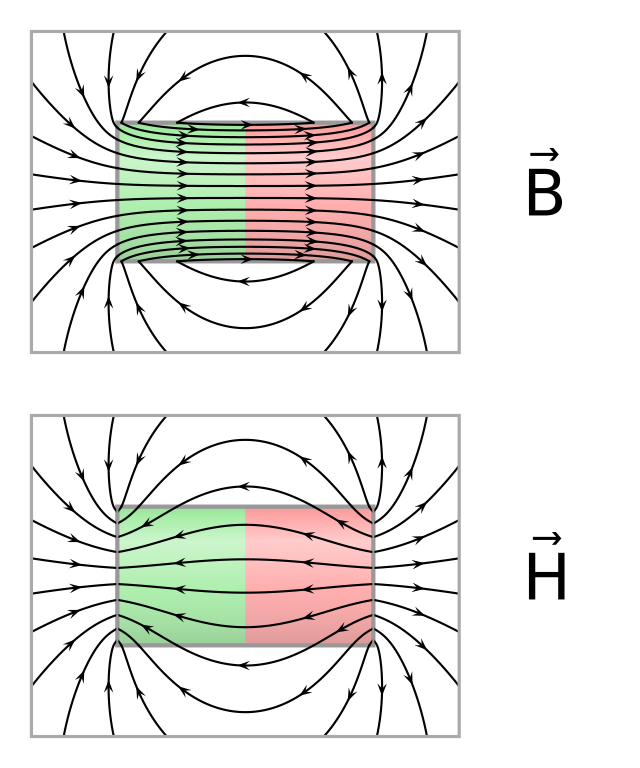Magnetic Flux - Definition, Unit, Properties, FAQs
Magnetic flux is a fundamental topic in physics that helps in understanding electromagnetic phenomena. Magnetic flux builds the foundation for electromagnetic induction. It is the total magnetic field passing through a given surface. In this article, we will discuss what is a magnetic field and flux, what is magnetic field lines, what is magnetic flux, the unit of magnetic flux, magnetic flux formula, what is magnetic flux density, magnetic flux density formula, flux meter, and some related equations and relations.
JEE Main/NEET 2027: Physics Important Formulas for Class 10
NEET 2025: Mock Test Series | Syllabus | High Scoring Topics | PYQs
JEE Main: Study Materials | High Scoring Topics | Preparation Guide
JEE Main: Syllabus | Sample Papers | Mock Tests | PYQs
- What is Flux and What is a Magnetic Field?
- Define Magnetic Field Lines
- What is Magnetic Flux?
- Symbol and Unit of Magnetic Flux
- Magnetic Flux Formula
- What is Magnetic Flux Density?
- Magnetic Flux Density Formula
- Formula Relating Magnetic Flux Density and Magnetic Field Intensity
- Relation Between Magnetic Flux Density and Magnetic Vector Potential
- Flux Meter
- Light Flux Density and Spectral Flux Density

What is Flux and What is a Magnetic Field?
Flux definition and Flux meaning: Flux is the presence of a force field in a specified physical medium or the flow of energy through the surface. In electronics, the term applies to any electrostatic field as well as any magnetic field. Flux is depicted as "lines" in a plane that contains or intersects electric charge poles or magnetic poles.
The magnetic fields are generated from the magnet's magnetic influence that may be experienced. It is represented as B, and the unit of magnetic field is Tesla. The direction of the magnetic field around a magnet can be found by placing a small compass in the magnetic field. Not only can a magnetic field pass through air, but it can also pass through other materials. The earth generates its magnetic field, which protects the ozone layer from the sun's rays and it is important for navigation also.
Define Magnetic Field Lines
A magnetic field line is defined as a curve drawn in the magnetic field in such a way that the tangent to the curve at any point gives the direction of the magnetic field. They start at the North Pole and end at the South Pole. The magnetic field at a point is tangential to the magnetic field lines.
The right-hand thumb rule can be used to determine the direction of magnetic lines around a current-carrying conductor. Hold the wire with four fingers of your right hand with your thumb up. If the direction of the current is towards the thumb, then the magnetic lines curl in the same direction as your other four fingers. This shows that the magnetic field is always perpendicular to the direction of the electric current.
The magnetic field strength at a given position due to the current carrying wire is determined by
- The current flowing across the wire
- The point's distance from the wire
- The point's angle from the wire
- The magnetic nature of the medium.
The magnetic field lines are stronger near the current carrying wire and it diminishes as you go away from it. This is represented by drawing magnetic field lines closer together near the wire and farther away from the wire.
Properties of Magnetic Lines of Force
- Magnetic lines of force are enclosed, continual curves that extend through the magnet's body.
- It originates at the North Pole and ends at the South Pole.
- Magnetic lines of force never overlap one another.
- The magnetic field direction is determined by establishing a tangent at any point on the curved line.
- Magnetic lines of force will be greater at the poles than at the equator.
What is Magnetic Flux?
Magnetic flux definition: Magnetic flux refers to the total number of magnetic field lines penetrating any surface placed perpendicular to the magnetic field. The overall magnetic field that traverses across a specific area is determined by magnetic flux. It's a valuable tool for identifying the effects of magnetic force on things in a particular location.
Symbol and Unit of Magnetic Flux
In physics, generally electromagnetic induction, the magnetic flux throughout the surface integration of the normal component of the magnetic field B over a surface is the magnetic flux throughout that surface. It is commonly indicated by the symbol $\Phi$ or $\Phi_B$. The SI unit of magnetic flux is Weber(Wb),
while 1 Weber $=10^8$ Maxwell
Hence Maxwell is the CGS unit of magnetic flux.
Magnetic Flux Formula
The magnetic interaction is characterized as a vector field, in which each point in space is designated a vector that indicates the force that a moving charge will encounter at that position. Because a vector field is difficult to interpret at first, field lines would be used to describe it in fundamental physics.

The number of field lines determines the magnetic flux through a surface that flows through it; the flux can be specifically defined as the number of field lines that pass through it. The magnetic flux is the difference between the number of field lines going through a surface in one direction and the number passing through in the other direction.
The magnetic flux $\Phi_B$ linked with a surface held in a magnetic field B is defined as the number of magnetic lines of force crossing a closed area. If the angle between the field's direction and area is normal, then
$$\Phi_B=\vec{B} \cdot \vec{A}$$
$$
\Phi_B=B \cdot A \cdot \cos \theta
$$
Whenever there is a change in the magnetic flux linked with a closed circuit, an electromotive force is produced. This electromotive force is known as the induced electromotive force and the current that flows in the closed circuit is called induced current.
The phenomenon of producing an induced electromotive force due to the changes in the magnetic flux associated with a closed circuit is known as electromagnetic induction.
| Related Topics, |
What is Magnetic Flux Density?
Magnetic flux density definition: Magnetic flux density is the quantity of magnetic flux per unit area measured perpendicular to the magnetic flux direction. B=μH is the relationship between Flux density B and Magnetic Field (H). It is expressed in Webers per square meter, which is equal to Tesla [T]. The number of magnetic field lines crossing the unit area kept normal to the direction of the field lines.

A vector field is magnetic flux density. The magnetic flux flow is generally directed from the North Pole to the South Pole. Furthermore, these magnetic lines create complete loops that exit at the North Pole and enter at the south pole of the magnet. Magnetic poles are always found in groups of two. The flux density is expressed as the proportion of uniformly dispersed flux per unit area of the cross-section it acts through.
Magnetic Flux Density Formula
The magnetic flux formula is expressed as,
$$
B=\frac{\Phi_B}{A}
$$
where,
- $B$ is the magnetic flux density
- $\Phi_B$ is the magnetic flux
- $A$ is the area through which the magnetic flux passes
Formula Relating Magnetic Flux Density and Magnetic Field Intensity
The relation between magnetic field intensity and magnetic flux density is given as,
$$
B=\mu H
$$
where,
- $B$ is the magnetic flux density
- $\mu$ is the magnetic permeability of the medium
- $H$ is the magnetic field intensity
The product of the magnetic permeability of a medium by the intensity of the magnetic field in it, and induction of magnetism in a body while it is in a magnetic field or the magnetic flux generated up by a magnetomotive force. When a charged particle accelerates, it is subjected to a force known as the magnetic field, magnetic induction, or magnetic flux intensity. The method of constructing electric current with a magnetic field is known as electromagnetic induction. When a magnetic field and an electric conductor move relative to one another, the conductor crosses the magnetic field's lines of force. Many electrical appliances are powered by electromagnetic induction. Electrical generators are one of the most well-known applications.
Relation Between Magnetic Flux Density and Magnetic Vector Potential
The magnetic field is the curl of the magnetic vector potential, as per the relationship between magnetic field strength and magnetic vector potential. The space derivative of the magnetic vector potential A can be used to compute the magnetic flux density B.
$$
\mathbf{B}=\nabla \times \mathbf{A}
$$
where,
- $B$ is the magnetic flux density
- $A$ is the magnetic vector potential
Magnetic Circuit
One or more closed-loop channels containing a magnetic flux cover a magnetic circuit. Permanent magnets or electromagnets generate the flux, which is controlled to the path by magnetic cores made of ferromagnetic components like iron, though there may be air gaps or other materials in the path.
In an air gap, a magnetic circuit is used to create alternate portions of high and low magnetic fields. A magnetic circuit is a closed path that is followed by magnetic flux. Flux in a magnetic circuit originates at one place and ends at the same location.
Flux Meter
A flux meter is a tool for determining the magnetic flux of a permanent magnet. This apparatus has been used to measure the magnetic features of Earth's magnetic field since the 19th century... There have been significant advancements in its design, and digital flux meters are now available on the market. The flux meter is a more advanced version of the ballistic galvanometer.
Working Principle of Flux Meter
The basis of operation of a flux meter is based on Faraday's law. When a conductor is positioned between shifting magnetic fields, a voltage is induced in the conductor, according to Faraday's law of electromagnetic induction. Similarly, a voltage is induced in a moving conductor when it is put between two stable magnets. This induced voltage will be proportional to the flux rate of change. As a result, the flux meter is made up of a moving coil sandwiched between the magnetic fields of two permanent magnets that are both steady. A calibration meter is used to calculate the voltage change in the coil. This value indicates how much flex is there in the field.
Light Flux Density and Spectral Flux Density
The rate at which energy is transported by electromagnetic radiation through the use of a real or virtual surface, per unit surface area, and per unit wavelength, is referred to as spectral flux density in spectroscopy.
Light flux density is the rate at which visible light energy falls on a unit area of a surface, distributed over all visible wavelengths.
| Spectral Flux Density | Light Flux Density (Illuminance) |
| Energy as a function of wavelength or frequency | Total visible light energy on a surface |
| $\mathrm{W} / \mathrm{m}^3$ or $\mathrm{W} / \mathrm{m}^2 / \mathrm{Hz}$ | Lumens/m ${ }^2$ or lux |
| Specific to wavelength or frequency | Includes all visible wavelengths together |
The ratio of magnetic flux and induced current:
It implies that induced current inhibits the magnetic field. As a result, a change in flux causes a current and a voltage that is proportional to the rate of flux change. This is in accordance with Ohm's Law. In a coil, a current and voltage generate a flux that is proportional to the current and voltage.
Also read:
Also Read
26 Nov'24 02:00 AM
25 Nov'24 03:57 PM
25 Nov'24 01:16 PM
25 Nov'24 12:38 PM
24 Nov'24 03:53 PM
12 Nov'24 11:17 PM